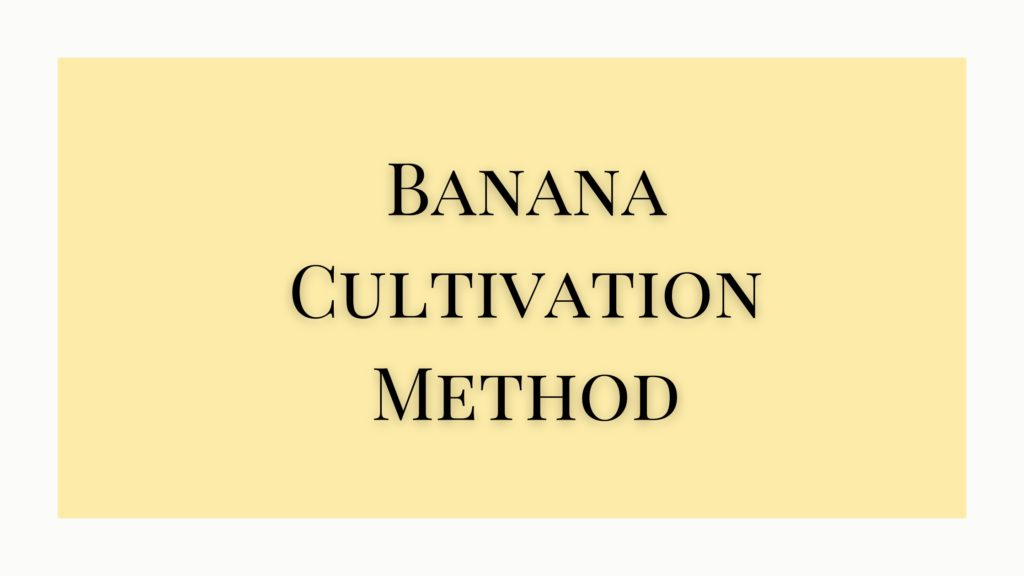The banana plant is a tropical plant that grows well in warm humid climates. Banana cultivation methods must ensure optimal climatic conditions because low temperatures damage the plant tissues and can affect the quality of the fruit.
The scientific name of the banana plant is Musa paradisiaca. All the desert bananas except the dwarf variety are Musa sapientium. Musa belongs to the family Musaceae and it was one of the first fruits grown by humans.
Edible Varieties of Banana
- Musa accuminata
- Dwarf Cavendish- dwarf variety called Basari, cultivated in Maharashtra and Tamil Nadu
- Chenkadali cultivated in Kerala and Tamil Nadu are red or green-red varieties.
- A triploid clone variety – Mysore variety called poovamchampa.
- A diploid clone called Soveri is cultivated in Maharashtra, Kerala, and Karnataka.
Banana Cultivation Method
It is cultivated mainly in India, Cuba, Central America, Jamaica, the West Indies, etc. In India, it is extensively planted in Tamil Nadu, West Bengal, Gujarat, etc.
Banana is often planted along with Arecnut and coconut plantations in the Malabar region and with mango in Punjab and Gujarat. They are mainly grown in large plantations.
Propagation of banana is by suckers. The soil is tilled deeply before planting the suckers. The size of the pit and the spacing between the plants depends on the variety and nature of the soil. In heavy black soil, the size of the pit is 1.5 x 1.5 ft and in light soil, such a large pit is not required.
The optimal temperature range for banana plants is 13-38 degrees Celsius. June- July is the ideal time for planting banana plants.
Spacing
A spacing of 5-6 ft between the plants is necessary for dwarf variety and the tall varieties require 9-10 ft. Humus soil with two-foot deep porous subsoil is the best for cultivating banana plants.
Irrigation
Banana is a rainfed crop and grows best in areas with a well-distributed rainfall from 175 to 250 cm per year. In drier regions, irrigation during Dec-Mar is necessary. Banana crop requires a well-drained soil.
Manuring
Banana plants are heavy feeders so it is necessary to add a top dressing of farmyard manure, compost, oil cake, etc, and fertilizers. Ammonium sulfate, potassium sulfate, and superphosphate are added at regular intervals of one month for up to 3-4 months.
Yield
Bananas yield the fruit from the first crop after one year of planting. Successive crops are secured at 5-10 months at regular intervals, depending on the climate and management. Harvesting is done for long-distance transport and is packed raw and often ripened artificially. A small portion of the yield from across India is exported and the rest is consumed within.
Diseases of Banana Plant
The banana plant is susceptible to Panama disease caused by Fusarium.
Control measures
- To control the disease the infected plant is uprooted and the soil is treated with quick lime.
- Flooding the soil under 5 cm of water for 45 days and application of lime are recommended.
- To kill beetles, Paris green mixed with flour is dusted.
Additional Reading
- Cultivation of Mango




